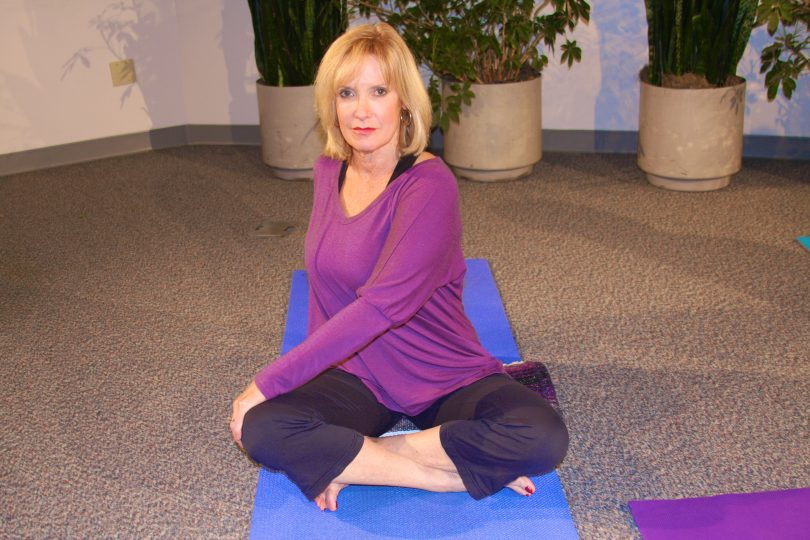Ancient Exercise meets Modern Medicine
She arrives with a smile on her face and yoga mat in her hand. Her gait is slow and somewhat unsteady, but her husband makes sure that she arrives safely. Arthritis and osteoporosis have made it impossible for her to continue with the activities that she always enjoyed, like running, aerobics and traditional gentle yoga classes. Therapeutic yoga has made her feel active again, allowing her to safely stretch, move and breath with more ease, sometimes in a chair, sometimes on a mat.
What is Yoga Therapy?
Therapeutic yoga is a relatively new specialty, focusing on bringing yoga practice to clients who have physical limitations making it difficult for them to participate in standard classes. Practitioners leading the sessions come from a variety of backgrounds; some are yoga teachers with additional specialized training for working with specifically-challenged clients, while others have come from health professions, like medicine, nursing and physical therapy, recognizing the opportunity to use some of the principles of yoga to treat their patients in complement with standard medical treatments.
According to the International Association of Yoga Therapists (IAYT), “Yoga therapy is the process of empowering individuals to progress toward improved health and well-being through the application of the philosophy and practice of yoga.” The skills of the therapeutic yoga teacher must include knowledge of the anatomy of the human body, an understanding of the mind and spirit, as well as an ability to safely and comprehensively develop a treatment plan using yoga customized to address the specific abilities and limitations of the client. They need the training and knowledge to consider the effects of illnesses and medications that may impact the client’s ability to safely practice.
Who Benefits?
Dilip Sarkar, M.D., retired vascular surgeon and current President of the IAYT, states “Yoga Therapy is an adaptation of yoga practice for people with chronic ailments. It causes a relaxation response with primary activation of parasympathetic nervous system. This is the opposite of “Fight or Flight” response causing stress. Yoga therapy is anti-stress and controls all the stress related present day ailments.” He currently teaches weekly therapeutic yoga classes in the Hampton Roads area.
Many medical diagnoses have been shown to respond to therapeutic yoga, including heart disease, osteoporosis, osteopenia, menopause symptoms, diabetes, multiple sclerosis, anxiety, depression, chronic pain, as well as other disorders whose symptoms result in diminished strength, balance, flexibility and increased pain.
Yoga therapy sessions are individualized, consisting of an evaluation and assessment of the needs of the particular student taking into consideration factors such as mobility, medications or limitations for the teacher to be aware of. The primary physician is asked to approve participation and provide any relevant patient information. Sometimes, a small number of similar students can be grouped into a class but often, especially initially, the students work alone with the yoga therapist.
Finding a Yoga Therapist
Look for a yoga therapy practitioner who is experienced with both teaching yoga and working with the therapeutic aspects of the practice. The International Association of Yoga Therapists is currently finalizing guidelines for certification of yoga therapy practitioners as well as credentialing the schools providing their training. Yoga therapy is not covered by insurance; fees are paid to the therapist varying depending on the location and credentials of the provider. Be sure to discuss goals for your sessions as well as any medical conditions and medications that would impact your ability to practice. A knowledgeable practitioner can help make your time on the mat safe, enjoyable and therapeutic.


